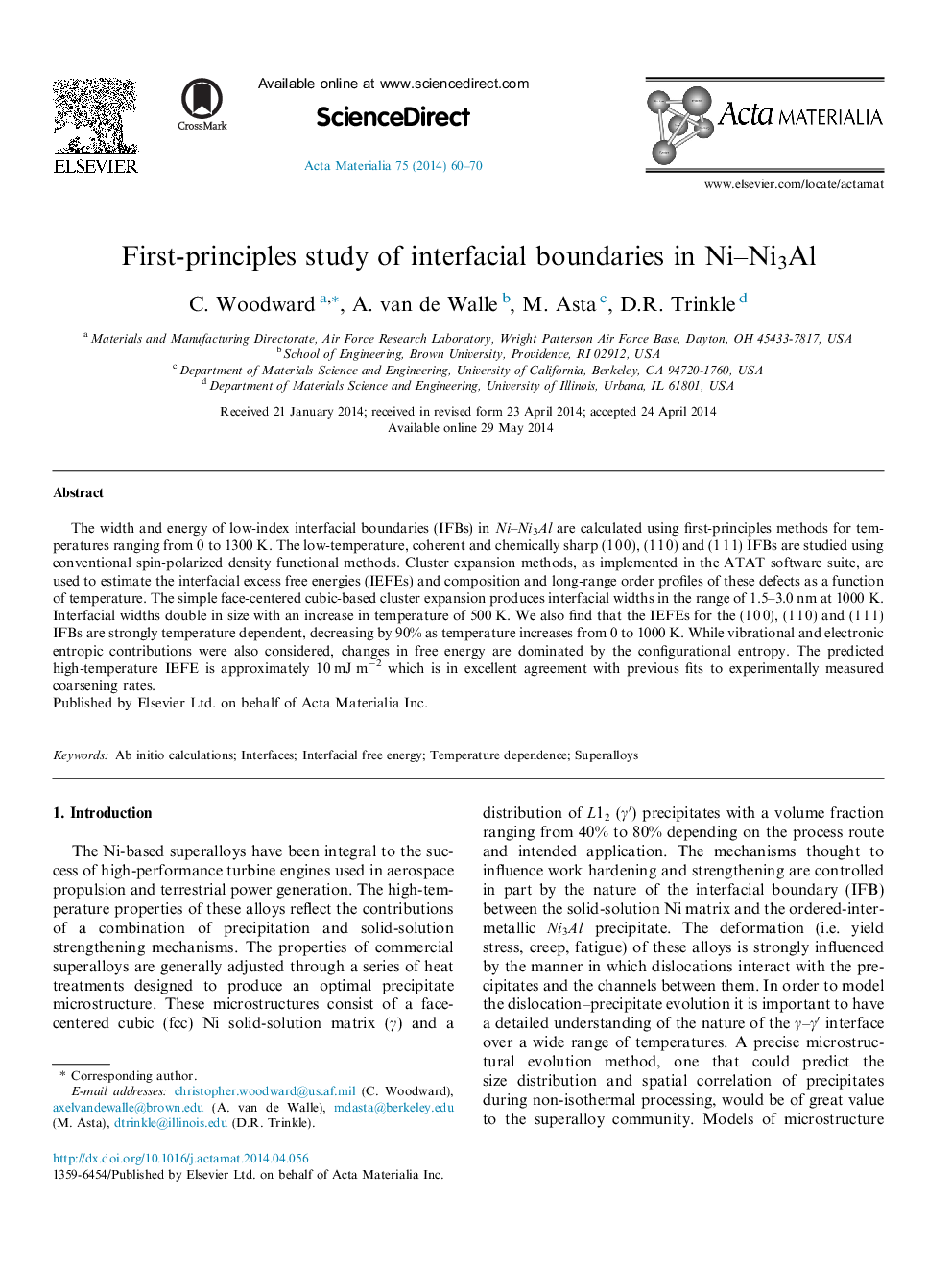| Article ID | Journal | Published Year | Pages | File Type |
|---|---|---|---|---|
| 1445465 | Acta Materialia | 2014 | 11 Pages |
The width and energy of low-index interfacial boundaries (IFBs) in Ni–Ni3Al are calculated using first-principles methods for temperatures ranging from 0 to 1300 K. The low-temperature, coherent and chemically sharp (1 0 0), (1 1 0) and (1 1 1) IFBs are studied using conventional spin-polarized density functional methods. Cluster expansion methods, as implemented in the ATAT software suite, are used to estimate the interfacial excess free energies (IEFEs) and composition and long-range order profiles of these defects as a function of temperature. The simple face-centered cubic-based cluster expansion produces interfacial widths in the range of 1.5–3.0 nm at 1000 K. Interfacial widths double in size with an increase in temperature of 500 K. We also find that the IEFEs for the (1 0 0), (1 1 0) and (1 1 1) IFBs are strongly temperature dependent, decreasing by 90% as temperature increases from 0 to 1000 K. While vibrational and electronic entropic contributions were also considered, changes in free energy are dominated by the configurational entropy. The predicted high-temperature IEFE is approximately 10 mJ m−2 which is in excellent agreement with previous fits to experimentally measured coarsening rates.
